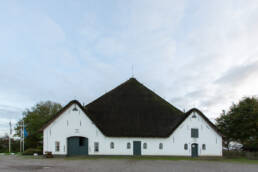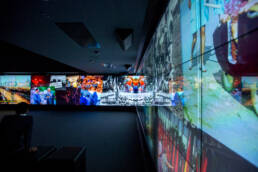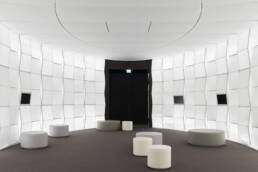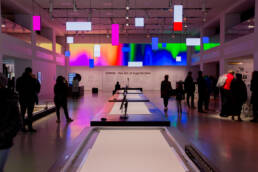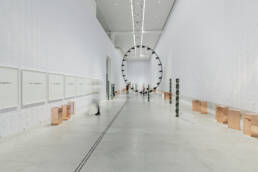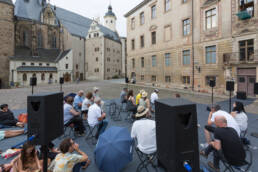SOUND SCENOGRAPHY
3d sound — audioguide — audioproduktion — ausstellungskonzept — austellungsplanung — field recordings — immersive sound — interaktive exponate — klang — konzeption — komposition — medienplanung — mischung — musik — projektsteuerung — raumakustik — sound design — sound installation — soundscape — spatial audio — sprachaufnahmen — szenografie — technische planung
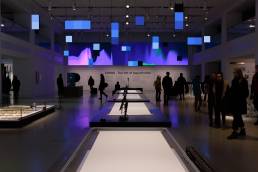
Wir übersetzen Wissen, Geschichten und künstlerische Ideen in Raumerlebnisse. Menschen setzen Raum immer wieder neu zusammen, indem sie ihn erwandern, ganzheitlich erfahren und individuell begreifen. Aus dem was sie sehen, hören und spüren wird Bedeutung konstruiert. Raum ist eine multisensorische Komposition — die wir aus der Hörperspektive gestalten. Klangszenografie ist die Kunst der Inszenierung von Raum mit Klang.
PORTFOLIO
Wir begleiten und leiten multidisziplinäre Teams in allen Lebenszyklen von Ausstellungsprojekten — von ersten Ideenskizzen über Konzepte, auditive Storyboards, Klanggestaltung, Komposition und Audioproduktion bis hin zur Installation und Mischung vor Ort.
Die Klangszenografie ist eine Perspektive, die wir als Szenograf*innen alle in unsere Arbeit mit einbeziehen können. Sie dient dazu, die auditive Dimension von Raum zu thematisieren, welche seit einigen Jahren zunehmend in den Fokus gestalterischer und kuratorischer Praxis rückt. Denn den unabhängig wirkenden Klang gibt es nicht: Klang wirkt immer im Zusammenspiel mit den komplementären Sinnen im spezifischen räumlichen, zeitlichen und individuellen Bedeutungskontext.
In Projekten wie Ausstellungen werden mit dem Orchestrieren unterschiedlicher auditiver Medien, Klangtypen und Klangformen die mannigfaltigen Elemente wie z.B. Exponate, Raumgrafik, Medienstationen oder Filminstallationen zueinander in Beziehung gesetzt, kontextualisiert, strukturiert, dramatisiert. Die Klangszenografie berührt hierbei Fragen der Architektur, Raumakustik, Medientechnik und Ästhetik genauso wie der Inklusion, Kommunikation, Vermittlung und Kuration. In diesem Sinne verstehen wir Sound nicht nur als hörbares Medium im Raum, sondern auch als Raum bildendes Instrument szenografischer Praxis. Deswegen ist Klang für uns auch nicht nur ein Medium in der Ausstellung, sondern vielmehr eine Gestaltungsperspektive.
Aber nicht nur in Ausstellung, auch in Architektur, Klangkunst, Musik, Installation, Theater, Hörspiel, Film, Games usw. können die jeweils medienspezifischen Fragen der Raumgestaltung, Kommunikation und Ästhetik sowohl multidisziplinär als auch aus der Hörperspektive gestellt werden. Klangszenografie findet überall statt wo in irgendeiner Weise Wahrnehmungsraum gestaltet wird. Klangszenografie ist die Kunst der Inszenierung von Raum mit Klang.
Mit Sound gestalten wir Erfahrungs- und Lernumgebungen, in denen die Besucher*innen individuell Bedeutung konstruieren und sich Wissen selbstbestimmt aneignen können. Von zentraler Bedeutung für die Entwicklung unserer Konzepte ist es, die ganzheitliche Wahrnehmung aus der Perspektive der zukünftigen Besucher*innen zu antizipieren.
Wir verstehen Raum als eine dynamische Beziehung zwischen Objekten, Architekturen und den Menschen, die ihn erkunden — weniger als ein mit Inhalt zu befüllendes Gefäß. Zur Frage, wie wir im Raum auditiv kommunizieren, sind uns zwei Aspekte besonders wichtig.
Zum einen denken wir Klang im umfassenden Sinne, wie er etwa in der englischen Sprache mit sound bezeichnet wird: als Phänomen. Klang bedeutet dann nicht nur Schallwellen, die durch physikalische Bewegung erzeugt werden, also etwa durch Klangkörper, Lautsprecher oder Kopfhörer. Und auch nicht nur etwas, das wir über unsere Ohren wahrnehmen. Vielmehr sind hiermit auch klangliche Phänomene gemeint wie z.B. die Stille (das Abhandensein von Schallwellen), unhörbare Klänge (z.B. eine sprechende Person auf einem stumm geschalteten Video-Screen), oder lediglich in unserer Vorstellung existierende Klänge (wie z.B. die Erinnerung an den Sound einer Stimme oder ein im Geiste gehörtes Musikstück). All dies können die Besucher*innen als konkret wahrnehmbare auditive Informationen nutzen, um situativ Bedeutung zu konstruieren.
Zum anderen Entsteht Bedeutung immer im Kontext ganzheitlicher Raumwahrnehmung. So ist für die Vermittlung von Inhalten entscheidend, wie ein bestimmter Sound zu seinem räumlichen und zeitlichen Kontext in Beziehung steht: In welchem Zusammenhang steht eine Grafik mit einem zeitgleich gesprochenen Text, eine musikalische Phrase mit einem Erklärtext eines Objekts, ein thematischer Bereich mit einer übergreifenden Klangatmosphäre? Gleichermaßen werden auch Fragen der Lesbarkeit und Verständlichkeit berührt: In welchem Moment, wie und warum rezipiere ich Text zugleich über die Augen und die Ohren? Wo mischen sich konkurrierende musikalische Sounds? Warum prägt die Klimaanlage die Atmosphäre, holt die Besucher*innen aus dem immersiven Erleben heraus in eine objektivierende, von außen betrachtende Perspektive auf das Thema? Warum verschwimmt die Sprachverständlichkeit — und damit womöglich gar der Sinnzusammenhang?
Unser Anspruch ist es, Konzepte im Sinne eines Gesamtkunstwerks zu entwickeln. Dementsprechend betrachten wir das räumliche Umfeld, die Architektur, die Medientechnik, die Inhalte und die Besucher*innen als ein Netzwerk aus wechselseitigen Beziehungen. Neben ersten Gesprächen, Ideen und Assoziationen steht am Anfang aller konzeptionellen Überlegungen auch der konkrete Raum oder Ort einer Ausstellung. Die definierten Themen und Inhalte setzen wir dazu mittels Klangszenografie ins Verhältnis.
Die Fragen die wir uns stellen sind: Welche Ideen und Themen sind bereits definiert, was ist noch in Fluss? Wie kann der auditive Ansatz ein Ausstellungskonzept zur Vollendung bringen — oder komplett umwerfen? Wie klingt der Ort an sich? Welche Rolle spielt die auditive Dramaturgie und wie tritt sie zu den anderen Sinnen und Vermittlungsebenen in Beziehung? An welchen Stellen bieten die Themen direkte oder indirekte Anknüpfungspunkte auditiven Erlebens? Welcher Klang hat welche Funktion: Exponat, Dokument, Erklärung, Kontext, Stimmung, Emotion?
Sprache, Atmosphäre, Geräusch, Musik und alle Zwischentöne für Raumsound, Objektsound, interaktive Exponate und Audioguides: Von Designskizzen über zunehmend detailliertere Ausarbeitungen bis hin zur Mischung vor Ort bieten wir alles aus einer Hand. Dabei verfolgen wir einen iterativen Ansatz mit häufigen Feedback-Runden in allen Projektphasen.
Mit der Erfahrung aus über 10 Jahren Projektarbeit sind wir an anspruchsvolle akustische Situationen vor Ort gewohnt. Schlechte Akustik gibt es nicht. Entscheidend ist, das adäquate Konzept zu finden, um mit der individuellen Raumakustik dramaturgisch, gestalterisch und technisch umzugehen. Entsprechend ist die Audioproduktion bei uns eng verzahnt mit sowohl der inhaltlichen als auch der technischen Konzeption.
Wir produzieren Audio-Content in der Regel für eine ganz spezifische Wiedergabesituation mit einer ebenso spezifischen Lautsprecher-Anordnung. Zugleich ermöglicht unser Workflow aber auch eine flexible Anpassung von Audio-Content an die unterschiedlichsten Wiedergabesituationen und Raumakustiken, sowie eine schnelle und unkomplizierte Transformation zwischen verschiedenen Medien und Ausgabeformaten, z.B. für die Weiterverwendung im Internet oder auf Kopfhörern.
In unserem Studio in Berlin arbeiten wir mit einer dreidimensionalen 24.1-Anordnung von Lautsprechern sowie einem stereofonen System mit dem legendären Referenzlautsprecher RL900 des traditionsreichen Unternmehmens Musikelektronik Geithain. Hier können wir alle relevanten Audioformate von Mono bis zu objektbasiertem Spatial Audio produzieren, einschließlich MNTN, Ambisonics, Dolby Atmos, Wellenfeldsynthese und Binaural Audio.
Wir konzipieren Audiosysteme, die unsere Gestaltungskonzepte in konkrete Hörerfahrungen übersetzen. Dies beinhaltet die Abstimmung mit verbundenen Mediensystemen, Szenografie, Architektur, der spezifischen Raumakustik, sowie den zuarbeitenden Gewerken.
Die Grundlage für die Konzeption eines Audiosystems bildet das inhaltliche Gestaltungskonzept der Ausstellung aus der Perspektive der Klangszenografie. Darüber hinaus analysieren wir qualitativ die physikalische Raumakustik, sowie die erforderlichen und optionalen Nutzungsszenarien des Audiosystems.
Mit Blick auf Nachhaltigkeit sowie die gestalterischen, budgetären und kontruktionstechnischen Rahmenbedingungen
- formulieren wir Empfehlungen zur Verbesserung der Raumakustik
- definieren wir Anforderungsprofile an technische Geräte wie z.B. Kopfhörer oder Lautsprecher, sowie deren Anzahl und Position im Raum
- recherchieren und evaluieren wir Audioequipment wie z.B. besondere Lautsprechertypen
- entwickeln wir Zuspiel- und Interaktionsysteme
- entwerfen wir Audionetzwerke und Bedienkonzepte und integrieren diese in übergeordnete medientechnische Systeme
- unterstützen wir unsere Kunden bei öffentlichen Ausschreibungen
In der Umsetzung unterstützen wir unsere Kunden
- bei der Auswahl von Anbieter*innen und Dienstleister*innen
- bei der Überwachung der Ausführung
- bei Qualitätsprüfungen
- bei der Abnahme audiotechnischer Systeme
- bei der Inbetriebnahme und Konfiguration
- mit dem qualitativen Fine-Tuning der Klangcharakteristik
Um eine kritische, interdisziplinäre Reflexion zu kultivieren und die Entwicklung und Verbreitung von auditiven Praktiken auf dem Gebiet der Szenografie und des Ausstellungsdesigns zu fördern, engagieren wir uns beim spæs — lab for spatial aesthetics in sound Berlin.
Das Labor arbeitet unabhängig von kommerziellen und akademischen Beschränkungen. Es fördert den Austausch und die Innovation von Ideen, Fähigkeiten und Wissen an der Schnittstelle von Kunst, Wissenschaft und Technologie. Hier erforschen wir mit den Mitgliedern des lab und wechselnde Konstellationen von Residents mit unterscheidlichen Hintergründen die Beziehungen zwischen Klang, Raum und menschlicher Erfahrung aus der Perspektive der Ästhetik.
ÜBER UNS
Mit dem Hintergrund aus bildender Kunst und Filmsound haben wir 2011 das Studio TAUCHER Sound Scenography gegründet, um die Beziehungen zwischen Klang, Raum, Ästhetik und Kommunikation in szenografischen Projekten zu gestalten. Ein ganz reizendes Netzwerk kreativer Menschen aus den Bereichen Sound, Musik, Buch, Grafik, Ausstellungstechnik, Produktdesign, Interaktionsdesign, Softwareentwicklung und Architektur ergänzt unser Portfolio und unsere Kapazitäten in den jeweiligen Projekten.
Aleesa Savtchenko
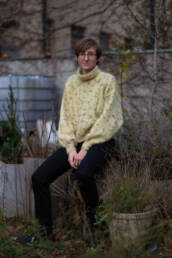
Johannes Scherzer

BLOG
Welches Sound System liefert die bestmögliche Qualität für Ausstellungsprojekte?
Die Frage nach einer guten Audioqualität in Ausstellungsprojekten ist keine einfache, da Ausstellungen eine einzigartige Akustik und jeweils individuelle Rahmenbedingungen aufweisen. Im Gegensatz zu…
Im Spannungsfeld zwischen Anwesenheit und Abwesenheit
In unserer Zusammenarbeit mit Alicja Kwade für ihre Einzelausstellung in der Berlinischen Galerie ging es um die Frage, in welcher Weise ihr Herzschlag sich im Spannungsfeld zwischen Anwesenheit und…
Erfahrungsräume
Während einer Reise in 2010 haben wir einige Tage auf einer weit abgelegenen Berghütte verbracht, im ukrainischen Teil der Karpaten. Wir ließen unseren weißen Volvo 740 unten im Tal stehen. Mit…
REFERENZEN
Alicja Kwade | Ars Electronica | BARCO | Berliner Festspiele | Bertelsmann Stiftung | CBE DIGIDEN | Creative Technology | Deutsches Elfenbeinmuseum | DRIVE Volkswagen Group Forum | FILMTEC | Fraunhofer IIS | HAW Hamburg | Helmholtz-Zentrum hereon | Koblenz Touristik | LWL-Museum für Naturkunde | m box | phase 7 | sigina | Siemens Historical Institute | Stiftung Nordfriesland | Stiftung Planetarium Berlin | studio klv | Studio Tomás Saraceno | SWD Group | TAMSCHICK MEDIA & SPACE | TRIAD Berlin | VW Group Forum | YMUSIC | ZENVISION
